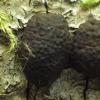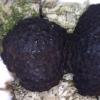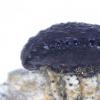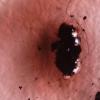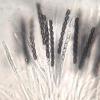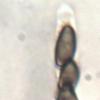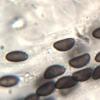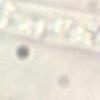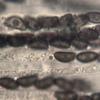
09-12-2025 12:06
 Andgelo Mombert
Andgelo Mombert
Bonjour,Je recherche l'article concernant Hypobryo

07-12-2025 16:07
Arnold BüschlenHallo, ich habe in einer Moos-Aufsammlung (epiphy

08-12-2025 21:04
Mark Stevens"Hello everyone,I'm relatively new to microscopy (

08-12-2025 18:59
 Lothar Krieglsteiner
Lothar Krieglsteiner
.. found by a seminar-participant, I do not know t

08-12-2025 17:37
 Lothar Krieglsteiner
Lothar Krieglsteiner
20.6.25, on branch of Abies infected and thickened

16-03-2014 22:00
Hello,I found this species a few months ago but ha

08-12-2025 13:39
Thomas Læssøehttps://svampe.databasen.org/observations/10572899
I found this stromatic fungus growing on the wood of _Castanea sativa_. The stroma is brown and exsudes a red pigment in KOH. The asci are very long
and thin, up to 150 x 6 µm, unitunicate, apically amyloid, and contain 8-spores each, uniserially arranged at the top. The spores are one-celled, hyaline when
young and soon brown, guttulate, with the following dimensions:
(6.7) 6.9 - 7.7 (8.1) × (3.3) 3.5 - 4.1 µm
Q = (1.8) 1.81 - 2.1 (2.2) ; N = 27
Me = 7.4 × 3.8 µm ; Qe = 1.9 ,
which are much smaller than my previous observations of similar fungi. Can someone help me in give it a name?
Thanks in advance,
zaca

it fits well Annulohypoxylon minutellum, formerly known as Hypoxylon cohaerens var. microsporum.
Jacques
The size of the spores troubled me.
Best wishes,
zaca
D'accord pour Annulohypoxylon minutellum mais le support m'intrigue. J'ai souvent récolté cette espèce mais toujours sur Quercus sp.
Amicalement
Paul
cheers
After the proposal of Jacques, I looked for more information about this species and in the description of Hypoxylon cohaerens at the webpage "Pyrenomycetes from southwestern France"
http://pyrenomycetes.free.fr/hypoxylon/html/Hypoxylon_cohaerens.htm
I found the following text that I quote:
"Notes: Hypoxylon cohaerens is a common saprophyte of beech forests, characterized by black pulvinate stromata constricted at base with papillate ostioles. Two other taxa, H. cohaerens var. microsporum and H. multiforme, share similar stromatal features, and field identification relies mainly on host identification: H. cohaerens is restricted to Fagus while H. cohaerens var. microsporum is restricted to Quercus and Castanea and H. multiforme grows mostly on Betula, Alnus and Corylus. However, one collection made on Ligustrum vulgare, a member of Oleaceae, [Hautes Pyrénées (65), Bagnères de Bigorre, L'Arbizon, 04 Sept. 2002, JF-02154, leg. FC] proves that host specificity is rarely absolute."
From it I infer that Castanea sativa is a common host for Annulohypoxylon minutellum (formerly known as Hypoxylon cohaerens var. microsporum, as Jacques mentioned). Am I wrong?
Best wishes,
zaca

Hi together,
what grows on Quercus also grows on Castanea. There is no fungus I know (mycorhizal or saprotrophic) growing with/on Quercus that does not grow with/on Castanea. Example: even the typical Castanea-fungus Rutstroemia echinophila can be found on Quercus leaves and cupules.
Regards from Lothar
Best wishes,
zaca

